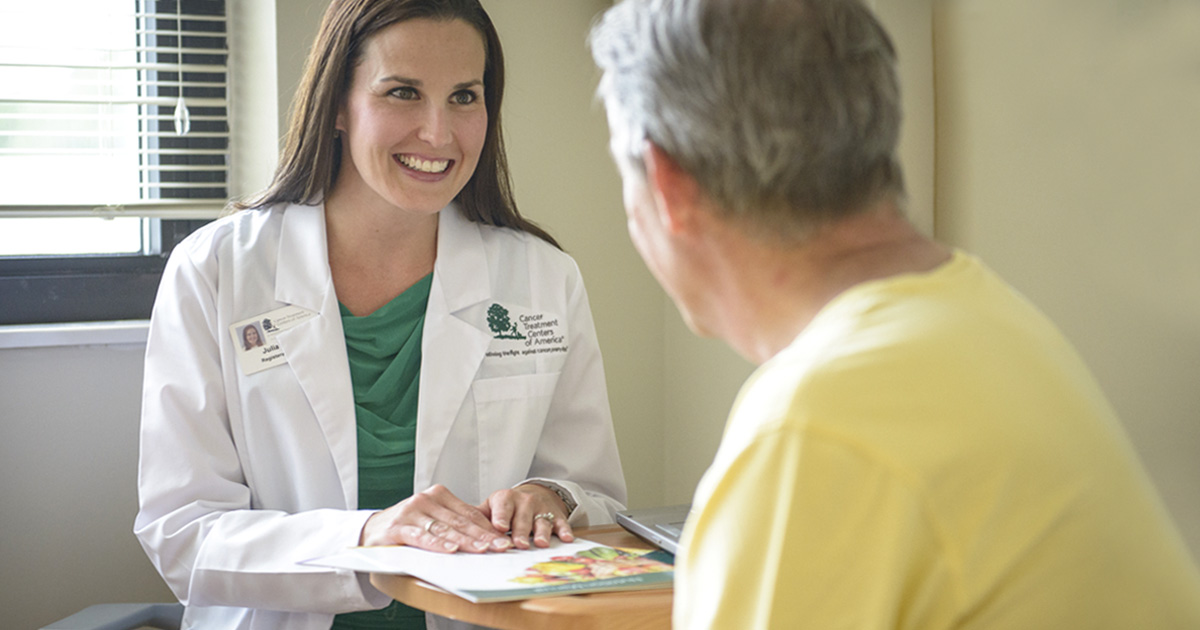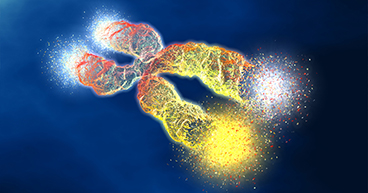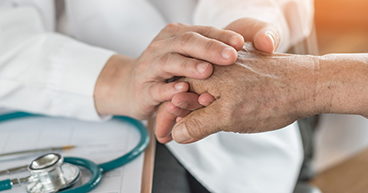
Researchers fear the coming of what's been dubbed a "silver oncologic tsunami" in the United States, worrying the medical community is not prepared to meet the needs of a rapidly aging population of cancer patients. Between 2012 and 2050, the number of Americans aged 65 and older is expected to nearly double, increasing from 43.1 million to 83.7 million. The ballooning need comes at a time when a growing number of people are surviving cancer and for longer. The colliding trends combine for a perfect storm, considering the median age of a cancer diagnosis is 66 years, and there aren't enough geriatric-trained providers to go around.
"Cancer, in general, is an old-age disease. The older we get, the harder it is to avoid the disease. The problem is, there are more patients and fewer oncologists, especially in areas that aren't well-served," says Issam Alawin, MD, Medical Oncologist at our hospital in Tulsa.
Geriatric oncology, the branch of medicine focused on diagnosing and treating cancer patients aged 65 and older, is itself quite young. In his 1988 presidential address to the American Society of Clinical Oncology (ASCO), B.J. Kennedy, MD—one of the first recognized pioneers in the field—urged medical oncologists to better understand cancer in older patients. In 1992, the first textbook on the topic, titled "Geriatric Oncology," hit the market. Today, according to a presentation at the 2017 ASCO annual meeting, "the treatment of the growing geriatric patient population is increasingly being recognized as a necessary priority of the oncology community."
The awareness is timely considering that by 2050, the 65-and-older demographic will make up about 20 percent of the population and account for the majority of U.S. cancer patients. "Nowadays, our 70-year-olds are like 50-year-olds," says Larry Ladi, MD, FCCP, Intensivist at our hospital in Tulsa. "The lifespan is longer." In fact, even as fewer people in the United States are dying from cancer, the number of new cancer cases diagnosed each year is expected to rise in the coming decades, from 1.7 million in 2018 to 2.3 million in 2035.
Age is one of the main culprits behind the steady climb. Growing older is among the biggest risk factors for cancer, and the single biggest risk factor for several individual cancer types, like prostate cancer, which is expected to reach 382,000 diagnoses annually by 2030, nearly 2.5 times higher than the number of cases diagnosed in 2017. The correlation between age and cancer makes sense because the older we get, the more exposures we've experienced, like tobacco, sun, alcohol, diet and environmental toxins, which may lead to cell mutations and, eventually, cancer.
But treating a growing population of elderly cancer patients brings new challenges and requires more providers to be trained in geriatrics. That's a problem when fewer physicians are entering geriatric training programs each year. In 2008, about 7,000 geriatricians were practicing medicine in the United States. By 2030, researchers project 36,000 will be needed to meet the growing need.
"Staging the aging"
When treating elderly cancer patients, oncologists must weigh the risks of treating the disease against the risks of not treating it, taking into account a patient's life expectancy, the likely progression of his or her cancer, the impact of potential treatments and treatment side effects, and perhaps most importantly, pre-existing conditions. "The biggest problem we face in treating our geriatric cancer patients is their co-morbidities, or additional conditions that occur alongside cancer and its side effects," Dr. Ladi says. "These additional conditions and side effects play a big role."
For example, when an elderly cancer patient undergoes surgery, anesthesiologists need to understand his or her complete medical history before they can determine how much anesthetic to administer. "The co-morbidities these patients have present challenges for us," says Sylvia Xi-Moy, MD, PhD, Chief Anesthesiologist at our hospital in Chicago. "Heart failure, renal failure, liver failure—all play an important role in how we adjust our anesthetic." Surgical procedures generally last longer for geriatric patients than for younger patients, too—sometimes as long as 16 to 18 hours—which affects how much anesthesia should be delivered.
These considerations are especially important among the elderly population, when even minor complications can cause serious problems. For example, cancer treatment can worsen existing chronic conditions—causing lung tissue inflammation in a patient with chronic obstructive pulmonary disease (COPD), for example. Studies also have found that older adults generally experience more side effects from chemotherapy than younger adults.
Cardiotoxicity, or damage to the heart that may occur during cancer treatments like chemotherapy and radiation therapy, is another common concern because 20 percent of elderly patients live with underlying cardiovascular disease. These patients also may have a prior history of cancer. A 2014 study published in the Journal of Clinical Oncology found that about 7 percent of people between the ages of 60 and 69 have been diagnosed with the disease.
Many elderly cancer patients also have so-called geriatric syndromes, which include frailty, malnutrition, fall risk, incontinence and cognitive deterioration. Because these symptoms are linked to a higher incidence of hospitalization and functional decline, they're important to consider when developing treatment plans for elderly cancer patients, who tend to have more geriatric syndromes than older adults who do not have the disease.
Future of geriatric oncology
Many oncologists base treatment for geriatric patients on Eastern Cooperative Oncology Group (ECOG) scores, which measure a person's status, from fully active to completely disabled, and are used to determine whether a patient is healthy enough to receive certain therapies. But some in the medical community believe a comprehensive geriatric assessment would provide a more complete picture, including information on pre-existing conditions and geriatric syndromes. "It would help better direct and address issues as they arise," says Stacy Newberry, MSN, APRN, AGCNS-BC, OCN, BMTCN, a Clinical Nurse Specialist. "A comprehensive assessment would give physicians a really good idea of whether patients can handle treatment and which treatments might be more appropriate."
Such an analysis would evaluate a patient's health through several lenses, including nutritional and oncology rehabilitation therapy, says Timothy Holder, MD, FAAFP, Medical Director of Supportive Care and Survivorship at our hospital in Tulsa. "The ECOG score doesn't look at underlying conditions, it doesn't look at a patient's ability to perform everyday tasks or fall risk, and it doesn't look at all the medications a patient may be taking that can interact with one another and with our chemotherapy drugs," he says. "The ECOG score does not address any of that."
Another deficiency in the system that researchers say deserves attention is how under-represented elderly cancer patients are in clinical trials. In fact, for the past several decades, less than 10 percent of cancer patients aged 75 and older have been included in phase II and phase III oncology clinical trials. Researchers believe that adding a higher percentage of older adults to clinical trials would provide a more robust picture of the needs of these patients and help determine which treatments might make sense in which cases.
On the positive side, many older patients now have alternative options to major surgery, including minimally invasive surgical procedures that are designed to reduce recovery times and lower the risk of post-operative complications. Some examples include chemoradiotherapy for rectal cancer and stereotactic body radiation therapy for non-small cell lung cancer.
Those options, though, don't obviate the need for geriatric oncologists. "We need more oncologists who are trained to treat this population," Dr. Alawin says. "But it may be an area where telemedicine could help. Many times, we may just need a check on the patient and the bloodwork. We can do that via telehealth and a lab convenient to where the patient lives." An increasing number of oral medications are also available, which means less time at clinics or infusion centers. "Care is getting better for geriatric oncology patients, but I think there are still many opportunities for improvement," Dr. Alawin says.


